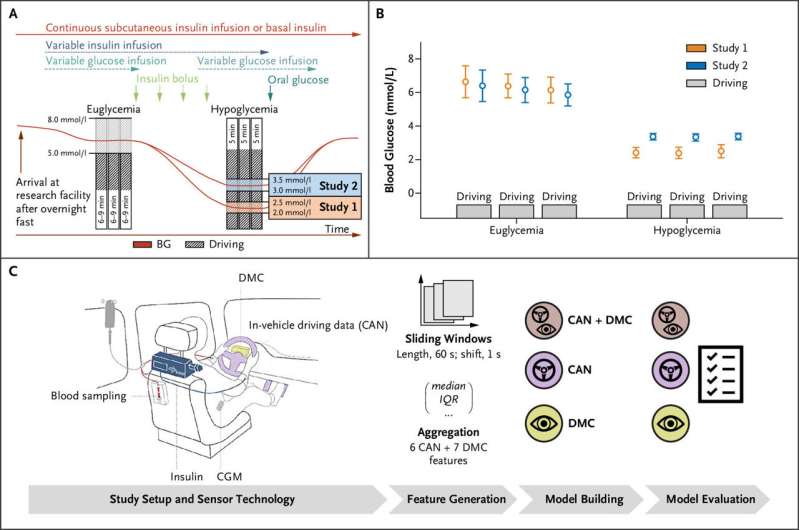This article has been reviewed according to Science X's editorial process and policies. Editors have highlighted the following attributes while ensuring the content's credibility:
fact-checked
trusted source
proofread
AI model provides a hypoglycemia early warning system when driving

Low blood sugar levels (hypoglycemia) are one of the most dangerous complications of diabetes and pose high risk during cognitively demanding tasks requiring complex motor skills, such as driving a car. The utility of current tools to detect hypoglycemia is limited by diagnostic delay, invasiveness, low availability, and high costs.
A recent study published in the journal NEJM AI provides a novel way to detect hypoglycemia during driving. The research was the work of LMU scientists in collaboration with colleagues from the University Hospital of Bern (Inselspital), ETH Zurich, and the University of St. Gallen.
In their study, the researchers collected data from 30 diabetics as they drove a real car. For each patient, data was recorded once during a state with normal blood sugar levels and once during a hypoglycemic state. To this end, each patient was deliberately put into a hypoglycemic state by medical professionals present in the car. The collected data comprised driving signals such as car speed and head/gaze motion data—for example, the speed of eye movements.
Subsequently, the scientists developed a novel machine learning (ML) model capable of automatically and reliably detecting hypoglycemic episodes using only routinely collected driving data and head/gaze motion data.
"This technology could serve as an early warning system in cars and enable drivers to take necessary precautions before hypoglycemic symptoms impair their ability to drive safely," says Simon Schallmoser, doctoral candidate at the Institute of AI in Management at LMU and one of the contributing researchers.
The newly developed ML model also performed well when only head/gaze motion data was used, which is crucial for future self-driving cars. Professor Stefan Feuerriegel, head of the Institute of AI in Management and project partner, explains, "This study not only showcases the potential for AI to improve individual health outcomes but also its role in improving safety on public roads."
More information: Vera Lehmann et al, Machine Learning to Infer a Health State Using Biomedical Signals—Detection of Hypoglycemia in People with Diabetes while Driving Real Cars, NEJM AI (2024). DOI: 10.1056/AIoa2300013




















